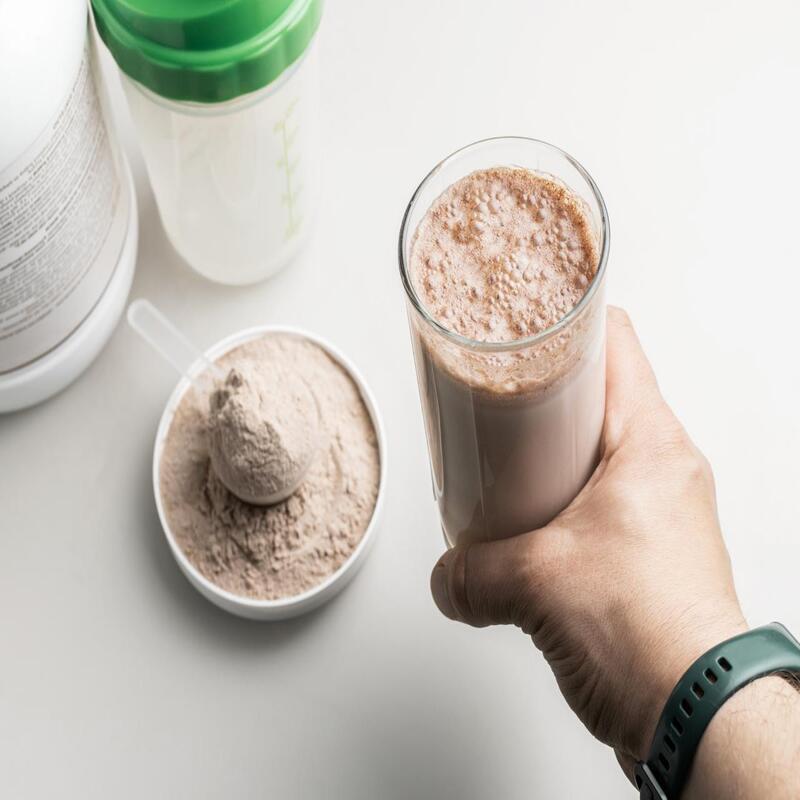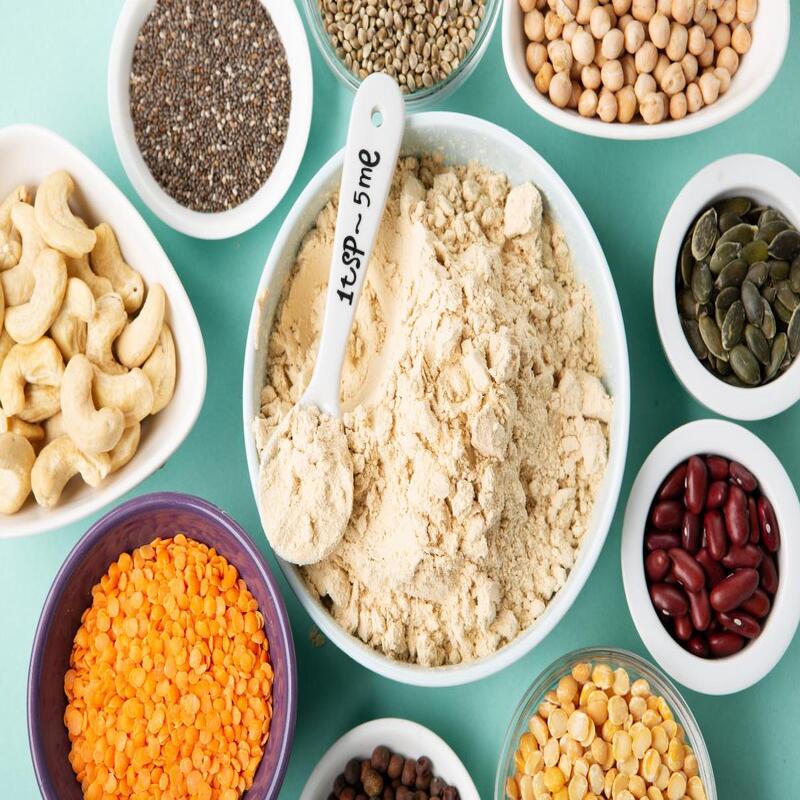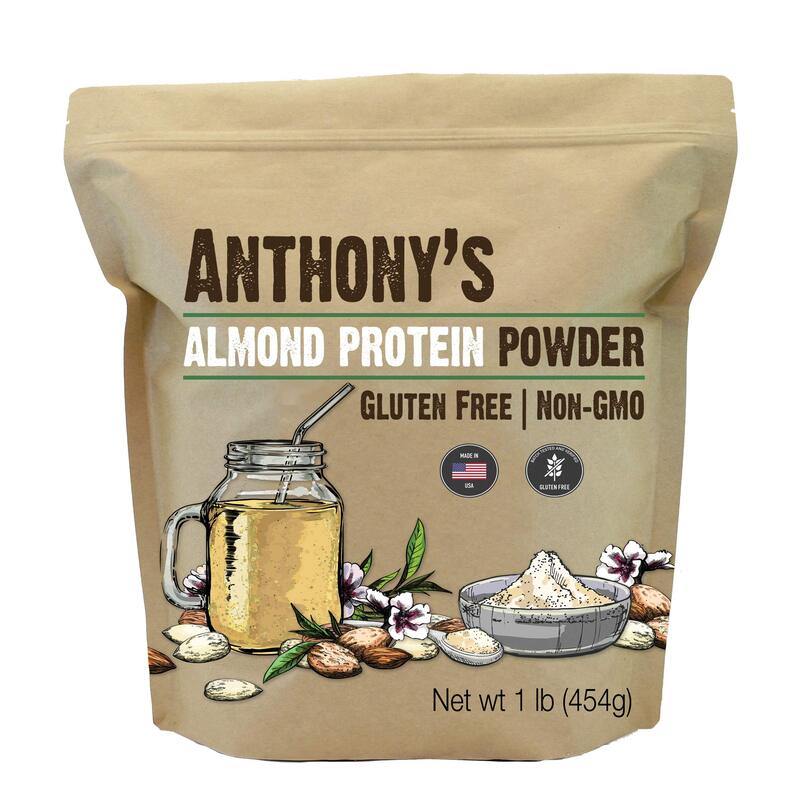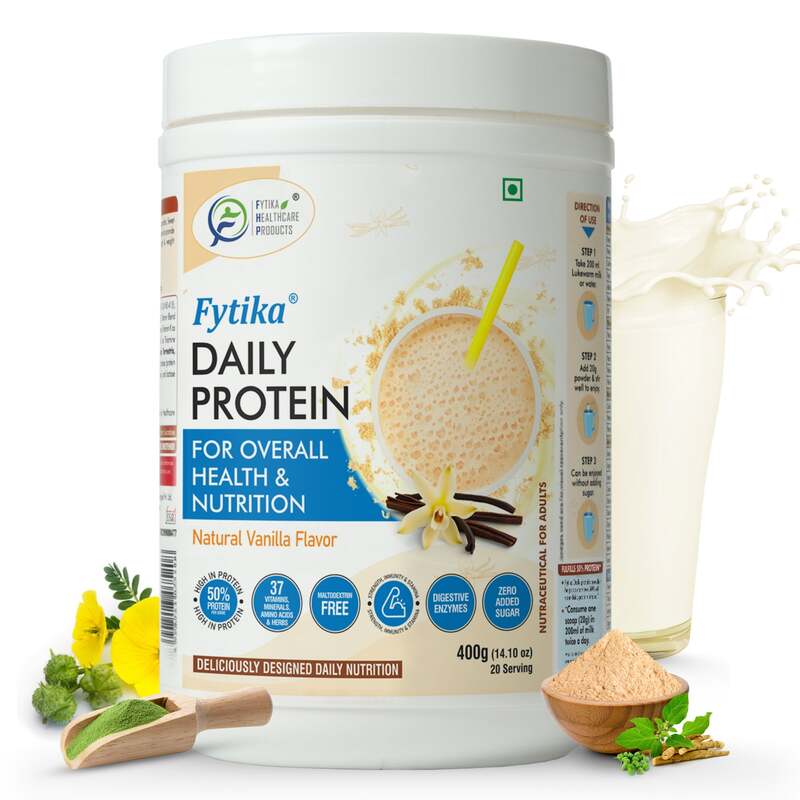Introduction to Protein Powders
Protein powders are dietary supplements designed to boost protein intake. They cater to anyone from gym enthusiasts to those who simply want to balance their diets. Made from a variety of sources, these powders come in flavours ranging from chocolate to vanilla and more. They can be animal-based, like whey or casein, or plant-based, such as soy, pea, or hemp. Protein powders provide a convenient method for increasing dietary protein, especially useful when traditional protein-rich foods are not available, practical, or preferred.
In today’s health-focused world, they play a significant role for many. People use them for muscle recovery, as a meal replacement, or to ensure adequate protein consumption. They can come as isolates, concentrates, or hydrolysates, with each having a distinct processing level and protein purity. Understanding protein powders is essential whether you’re aiming to up your protein intake for fitness goals or seeking a quick protein source on the go.
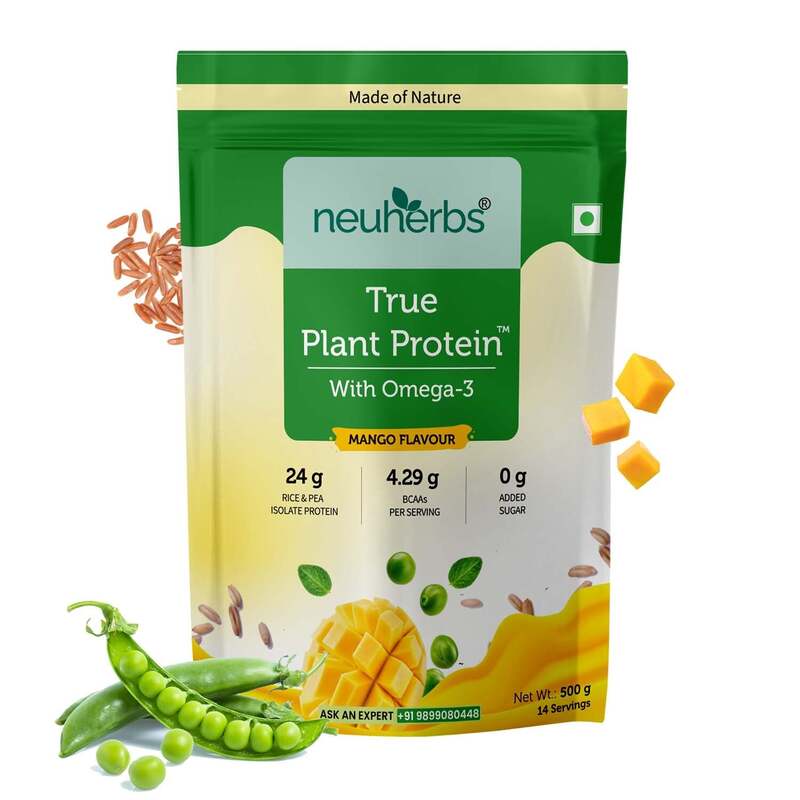
Various Types of Protein Powders
Protein powders come from many sources. They fit various lifestyles and dietary needs. You can find powders from milk like whey, or plants like soy and pea. The kind you choose can depend on personal preference or health requirements.
Whey Protein Varieties
Whey protein powders are popular, especially among athletes. They’re animal-based, from cow’s milk. Whey comes in different forms: concentrate, isolate, and hydrolysate. Concentrates have more fat and lactose. Isolates are higher in protein, and hydrolysates digest quicker. Whey is known for aiding muscle recovery.
Plant-Based Proteins
Plant proteins are great for vegans and those with dairy allergies. Common plant proteins include soy, pea, hemp, and rice. They vary in amino acids and digestibility. Soy protein, for example, contains all essential amino acids. Pea protein is hypoallergenic and environmentally friendly. Hemp protein includes extra nutrients like omega fatty acids.
Alternative Protein Sources
Beyond whey and plants, other protein powders exist. Egg white protein is low in calories and digests easily. Collagen protein, sourced from connective tissues, can support skin and joints. Casein protein, also from milk, digests slowly and keeps you full longer.
The Protein Powder Manufacturing Process
Making protein powder involves several detailed steps, from choosing ingredients to the final touch of flavor.
Sourcing Raw Materials
Protein powder starts with selecting quality ingredients, whether from animals or plants. Manufacturers consider factors like sustainability and nutrient content while choosing these raw materials.
The Extraction and Purification Phase
Next, producers extract protein using heat or enzymes. This process separates protein from fats, carbs, and other components.
Filtration and Concentration Techniques
Filtered through special membranes, protein becomes purer. Concentration techniques remove excess materials, aiming for higher protein levels.
Flavor Addition and Nutritional Enhancement
Finally, to improve taste and nutrition, manufacturers add flavors and vitamins. They ensure the powder is both enjoyable and healthy.
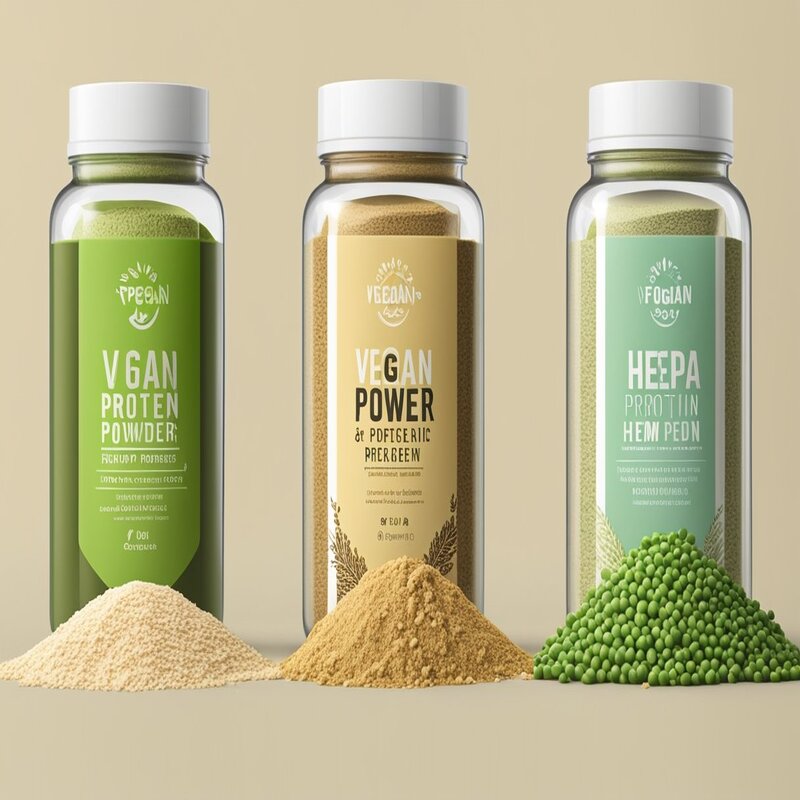
Health and Nutrition Aspects of Protein Powders
When it comes to our health and nutrition, protein powders can be a smart choice. They can offer a high amount of protein, which is important for muscle repair and growth. But not all protein powders are the same. The kind, how it’s made, and what’s in it, all affect how good it is for us.
Protein Quality and Bioavailability
The value of protein powder largely depends on its quality and how well our body can use it. Animal-based powders like whey and egg often have a high bioavailability. This means our bodies can use almost all of the protein in them. Plant-based powders like soy and pea are also good but might need more careful combining to get all the amino acids.
Whey isolate is highly pure and easily digested. Pea protein has great plant nutrients and is kind to the stomach. Hemp protein brings in healthy fats and fibers too. Each type has its own strong points when it comes to what our body needs.
Potential Contaminants and Quality Assurance
A big worry with protein powders is the risk of unwanted stuff in them like metals or chemicals. Plants used for protein can pick up harmful things from the soil they grow in. Animal-based powders can have traces from the feed or treatment of the animals.
Quality checks are key to make sure the powders are safe and clean. Reliable brands test their products to confirm they are free of bad contaminants. Always check the label for signs of third-party testing. This helps to make sure the powder is good quality and safe to use.
In the end, knowing how they make protein powder and what’s in it helps us make better choices for our health.
Ethical and Environmental Considerations
When we think about protein powders, it’s not just about health. Ethics and the environment matter too. We must think about where our protein comes from and its impact.
Animal-Based vs. Plant-Based Protein Powders
Choosing between animal and plant proteins is a big decision. Animal proteins, like whey, come from cows. This can raise concerns about how the animals were treated. Plant proteins, like pea or hemp, don’t involve animals. This makes them a choice for vegans and those against animal farming practices. Plant proteins also often have a lower environmental footprint.
Sustainability Factors in Protein Production
Protein powders can impact the planet. It matters how they are farmed and produced. Plants like soy or peas may need less land and water than animal sources. Some companies check their supply chains closely. They look for sustainable farming and fair worker treatment. When choosing a powder, look for signs of eco-friendliness and ethical practices.
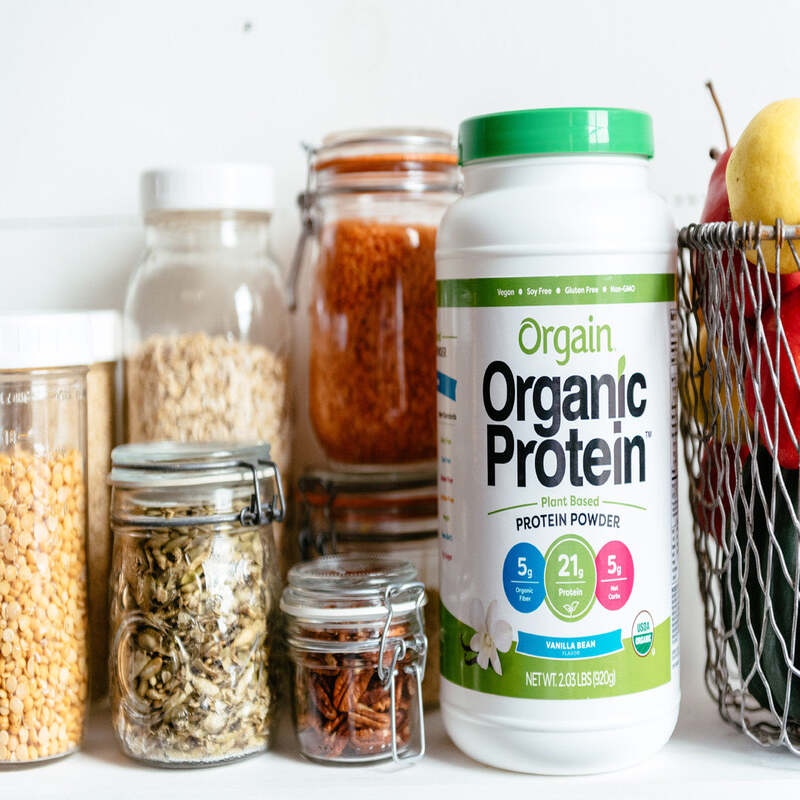
Making Informed Choices
Choosing the right protein powder is important. Look at labels and check for allergens or additives. Consider your health goals to find the best fit.
Reading Labels and Understanding Ingredients
Read labels carefully. Look for protein content, type, and any added sugars or artificial flavors. Understanding what’s in your powder helps avoid unwanted ingredients.
Considering Dietary Needs and Goals
Think about your diet and protein needs. Are you vegan or lactose intolerant? Choose a plant protein. Want more muscle? An isolate might be best. Align your protein powder choice with your dietary goals for best results.
Future Trends in Protein Powder Production
Plant-Based Protein Popularity
As health trends evolve, plant-based protein powders are gaining momentum. Many consumers are shifting towards vegan and vegetarian diets. Consequently, manufacturers are responding to this growing trend. They are formulating protein powders using sources like pea, rice, and hemp.
Plant-based proteins not only cater to dietary preferences but also address environmental concerns. The production of plant proteins generally has a lower carbon footprint. Brands marketing this aspect can attract eco-conscious consumers. Advocating sustainability in sourcing and production has proven to be a successful strategy.
Moreover, advancements in plant protein extraction methods are continually improving product quality. Manufacturers are investing in research to enhance digestibility and texture. This developing market segment shows a promising potential for sustained growth in the coming years. As consumers become more aware of their choices, brands must adapt to meet these evolving needs.
Customization and Personalization
Another exciting trend is the move toward customization. Consumers increasingly desire products tailored to their specific dietary needs. Some brands now offer customizable protein powders, where individuals can choose flavor, protein source, and additional nutrients. This approach empowers consumers to create a product that aligns with their lifestyle and health goals.
Personalization can be an effective way for brands to differentiate themselves. By leveraging technology, brands can collect consumer data and preferences. This information aids in developing products that cater to particular niches. Therefore, the potential for innovation in protein powder production is vast.
Furthermore, as nutritional science advances, the possibilities for personalized formulas will expand. Future protein powders may be designed based on individual health metrics. This level of personalization presents exciting opportunities for manufacturers and consumers alike. Staying ahead of such trends is essential for brands aiming to remain relevant in the market.
Conclusion: The Role of Protein Powders in Nutrition
Protein powders serve many nutrition needs. They fit well into different lifestyles and diets. Protein powders can support muscle growth and help with meal replacement. They ensure enough protein when whole foods are hard to get. This is useful for busy people and those with special dietary needs.
Protein powders are made from a variety of ingredients. Common sources include whey, soy, pea, and hemp. Each has its own method of processing and nutrition profile. They can be isolates, concentrates, or hydrolysates. Choosing the right one depends on your health goals and dietary needs.
Quality is key for protein powders. Good manufacturing practices remove unwanted contaminants. Quality checks keep powders safe. Always look for third-party testing on the label.
It’s also about ethics and the environment. Plant-based powders often have less impact on the planet. Look for brands that value sustainability and ethical practices.
When picking a protein powder, consider your personal health and the world around you. Think about the source, process, and testing. Choose one that fits your dietary needs and helps meet your nutrition goals.
